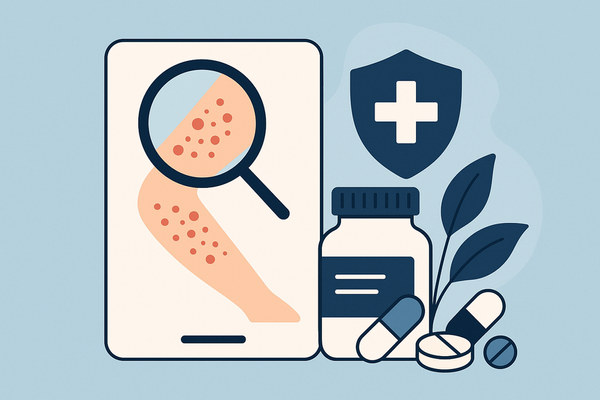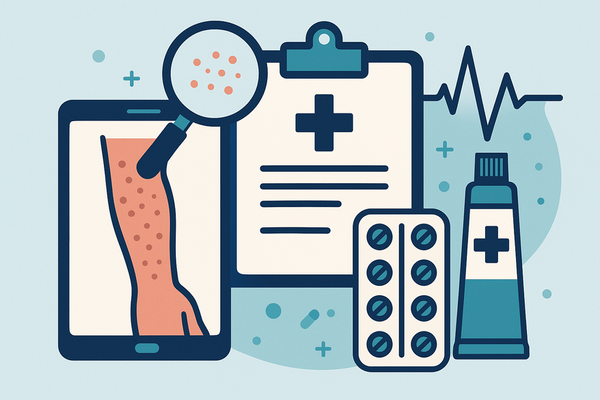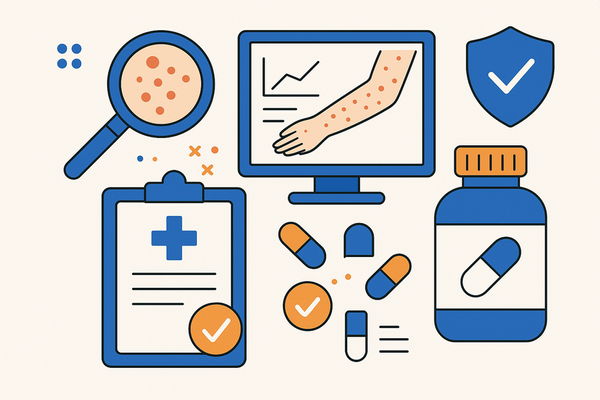Understanding the Limitations of AI Rash Detection in Dermatology
Explore the limitations of AI rash detection in dermatology, including biases, technical challenges, and ethical considerations affecting patient care.
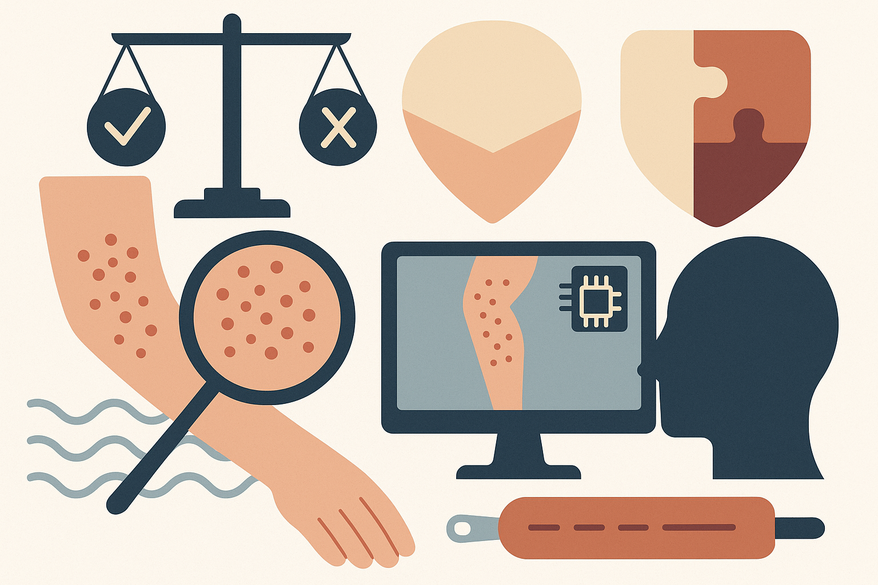
Estimated reading time: 8 min read
Key Takeaways
- AI rash detection accelerates triage but carries significant risks without oversight.
- Data bias and limited diversity compromise accuracy across skin tones.
- Technical constraints lead to false positives and false negatives, affecting patient outcomes.
- Ethical, legal, and integration challenges must be addressed for safe deployment.
- Human expertise remains essential to validate and interpret AI-driven findings.
Table of Contents
- Introduction
- Overview of AI Rash Detection Technology
- Data-Related Limitations
- Technical and Algorithmic Limitations
- Diagnostic Limitations
- Ethical and Legal Constraints
- Integration Challenges
- Implications and Recommendations
- Future Directions
- Conclusion
- FAQ
Introduction
AI rash detection refers to the use of computer algorithms—particularly machine learning and deep learning models—to identify and classify skin rashes from digital images. These systems rely on convolutional neural networks and pattern-recognition techniques to spot visual cues that may escape the naked eye. (Source: AJMC review, PMC article)
In this post, we explore the limitations of AI rash detection as these tools become more prevalent in clinical practice. Understanding these constraints matters for medical professionals and patients alike, ensuring safe, effective, and equitable use of automated skin assessment technologies.
Overview of AI Rash Detection Technology
AI rash detection begins with:
- Collection of large, labeled image datasets
- Training of deep learning models (e.g., convolutional neural networks) technical process of rash detection
- Automated pattern recognition and classification
Deployment contexts include:
- Mobile health apps for on-the-spot screening
- Diagnostic support tools in clinics
- Teledermatology platforms connecting patients and specialists
Key benefits of AI rash detection:
- Faster triage and screening of common conditions
- Ability to process thousands of images, easing overburdened systems
- Potential for early detection when dermatologists are not immediately available
Many consumer-facing solutions, such as Rash Detector, allow users to upload multiple images and receive an instant AI-driven analysis, making remote triage more accessible.
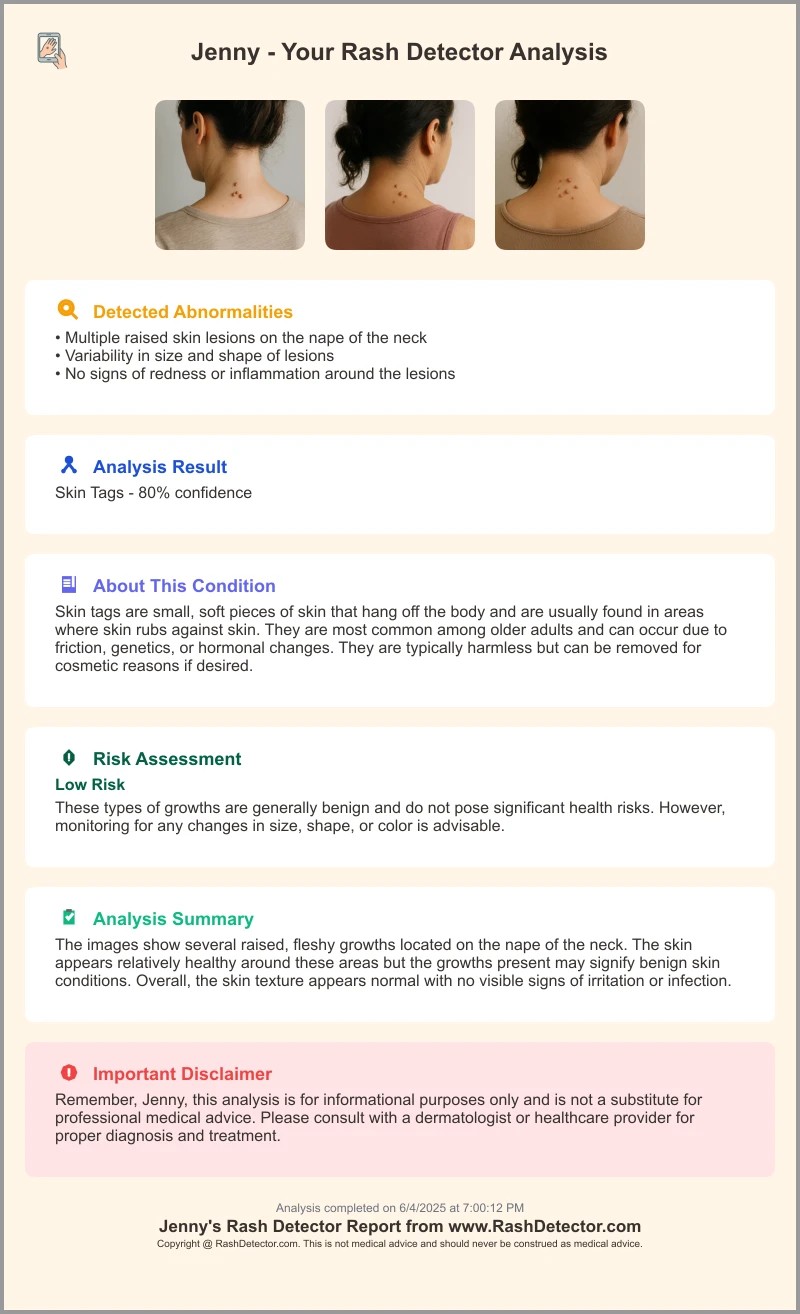
Data-Related Limitations
Data Bias and Dataset Diversity
- Dataset bias arises when training images lack diversity in skin tone, age, or geography.
- Models trained on mostly light-skin images perform poorly on darker skin, leading to misdiagnoses or missed findings.
- Underrepresented groups face reduced accuracy, perpetuating health disparities.
Without representative data, rash detection tools can reinforce bias rather than reduce it. For more on balancing datasets and improving equity, see machine learning skin analysis.
Technical and Algorithmic Limitations
False Positives, False Negatives, and Algorithmic Constraints
- Variation in lighting, camera resolution, and magnification alters how rashes appear, confusing algorithms.
- False positives generate unnecessary alarm and extra tests.
- False negatives can miss melanoma or severe infections, delaying critical care.
- Sensitivity often drops for rare or complex conditions poorly represented in training data.
These technical gaps limit the reliability of AI-based diagnostics in real-world settings.
Diagnostic Limitations
Human vs AI Rash Detection
- AI lacks clinical context—medical history, symptom timeline, systemic signs—all vital for accurate diagnosis.
- Dermatologists integrate hands-on exams, patient interviews, and lab data; AI focuses on pixels alone.
- Studies show AI classifiers can give clinically irrelevant or misleading advice compared to expert dermatologists.
This gap means AI is best used as a support tool, not a standalone diagnostician.
Ethical and Legal Constraints
Privacy and Liability
- Medical images contain sensitive personal data. Inadequate security raises privacy breach risks.
- Unclear liability exists if AI misdiagnosis leads to harm—developers and clinicians must clarify responsibilities.
- Regulators are still defining transparent frameworks to guide safe, ethical AI deployment.
Ethical and legal clarity is crucial to maintain patient trust and protect providers. For deeper insights on privacy considerations, see privacy considerations in AI rash diagnosis.
Integration Challenges
Embedding AI into Clinical Workflows
- Interoperability hurdles with existing electronic health records (EHRs).
- Staff retraining is needed to interpret AI outputs and maintain quality control.
- Models require continuous updates and revalidation to align with current clinical standards.
Without smooth integration and ongoing validation, AI tools may sit idle or generate outdated results.
Implications and Recommendations
Limitations in AI-driven skin analysis directly affect patient outcomes:
- Delayed diagnoses when serious conditions are missed
- Inappropriate treatments based on false positives
- False reassurance when problematic rashes go undetected
To ensure patient safety and trust, human oversight is essential. AI should augment, not replace, clinical judgment.
Actionable recommendations for healthcare providers:
- Validate AI tools regularly on local patient populations to detect bias and performance gaps.
- Prioritize building and sharing diverse, representative image libraries.
- Implement clear protocols: every AI-generated result must be reviewed by a qualified dermatologist before action.
- Educate patients about AI’s strengths and weaknesses to set realistic expectations.
Future Directions
Several research and development efforts aim to overcome today’s limitations:
- Data Expansion and Diversification
Global initiatives and public–private partnerships to collect and share images across all skin tones, ages, and geographies. - Algorithm Refinement
Integrating metadata (e.g., patient history, lesion progression) and adopting explainable AI to improve transparency. - Collaborative Frameworks
Multi-stakeholder collaborations among technologists, dermatologists, ethicists, and regulators, with clear guidelines for privacy and liability.
Conclusion
Despite rapid advances, the limitations of AI rash detection—from data bias and technical errors to ethical and integration challenges—remain significant. AI in dermatology can accelerate screening and extend specialist reach, but only when paired with human expertise and strong governance. By acknowledging current shortcomings and pursuing targeted improvements, we can harness AI’s potential while safeguarding patient outcomes and equity.
FAQ
- Can AI replace dermatologists in diagnosing skin rashes?
AI serves as a decision-support tool and cannot replace the clinical context, patient history, and hands-on examination that dermatologists provide. - How can bias be reduced in AI rash detection?
By building and validating models on diverse, representative datasets, regularly auditing performance across subgroups, and sharing anonymized data across institutions. - What measures ensure patient privacy with AI tools?
Implementing robust encryption, secure data storage, compliance with healthcare regulations (e.g., HIPAA), and clear consent protocols.


